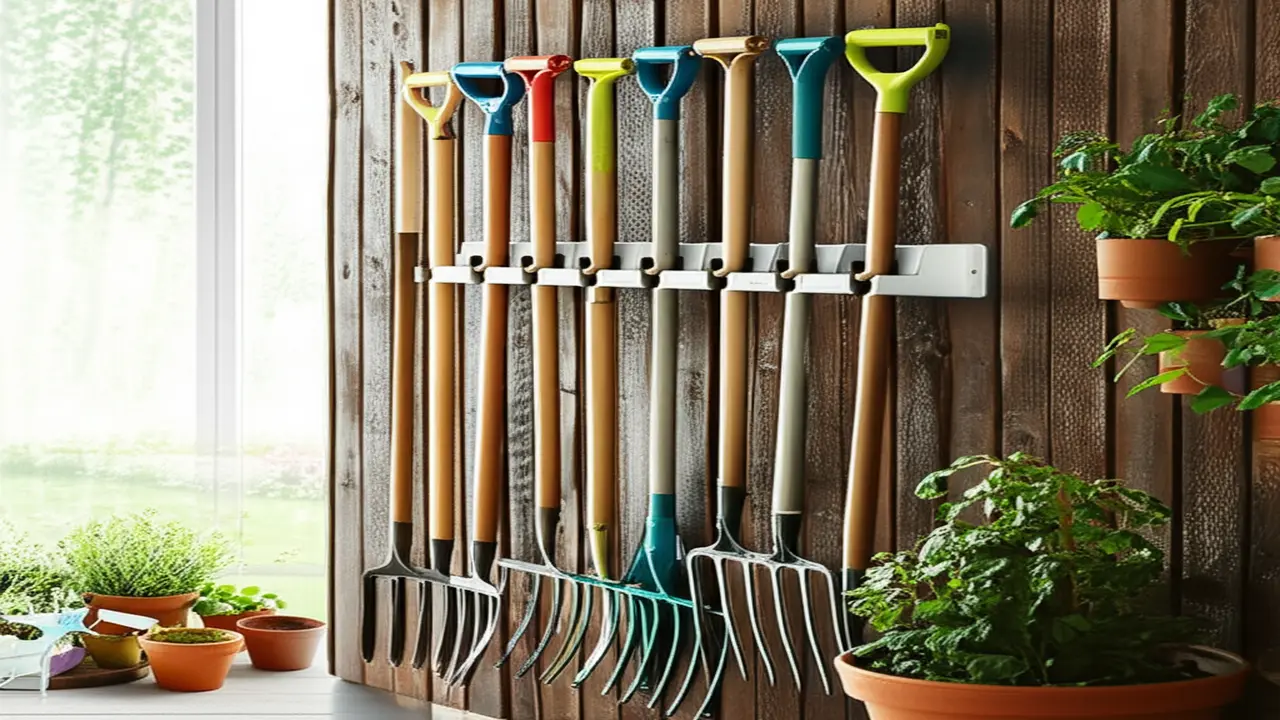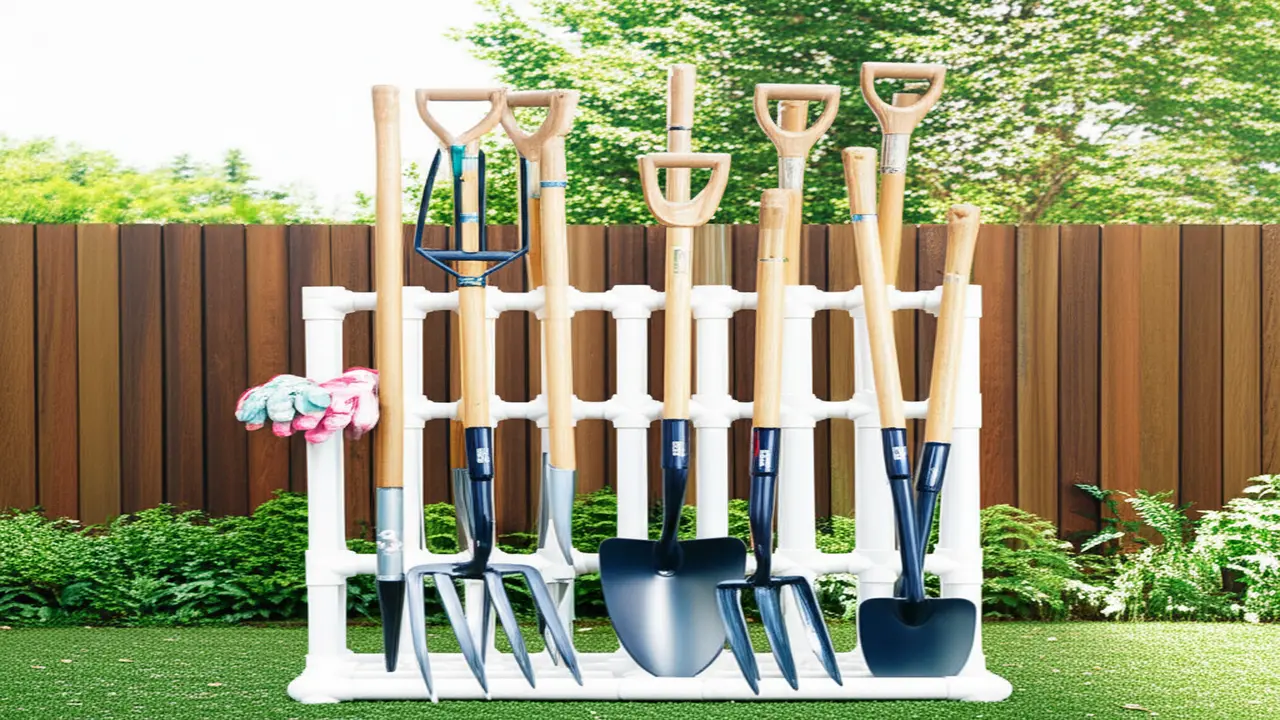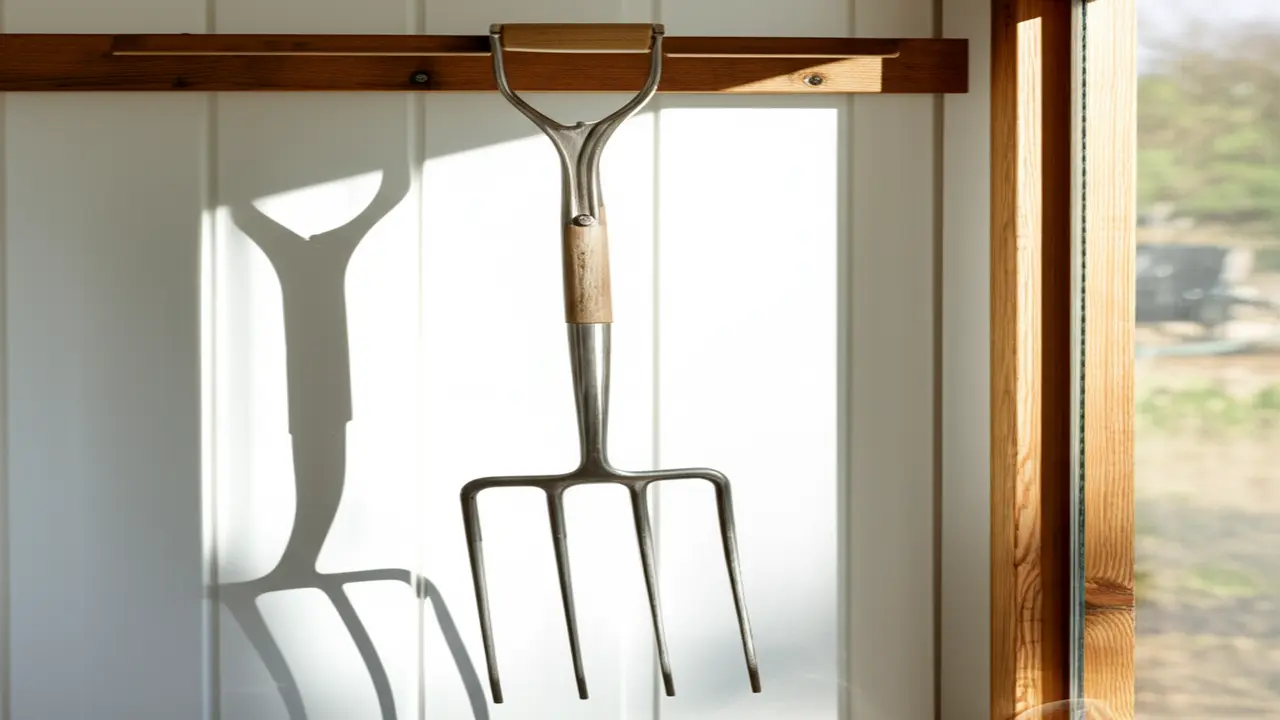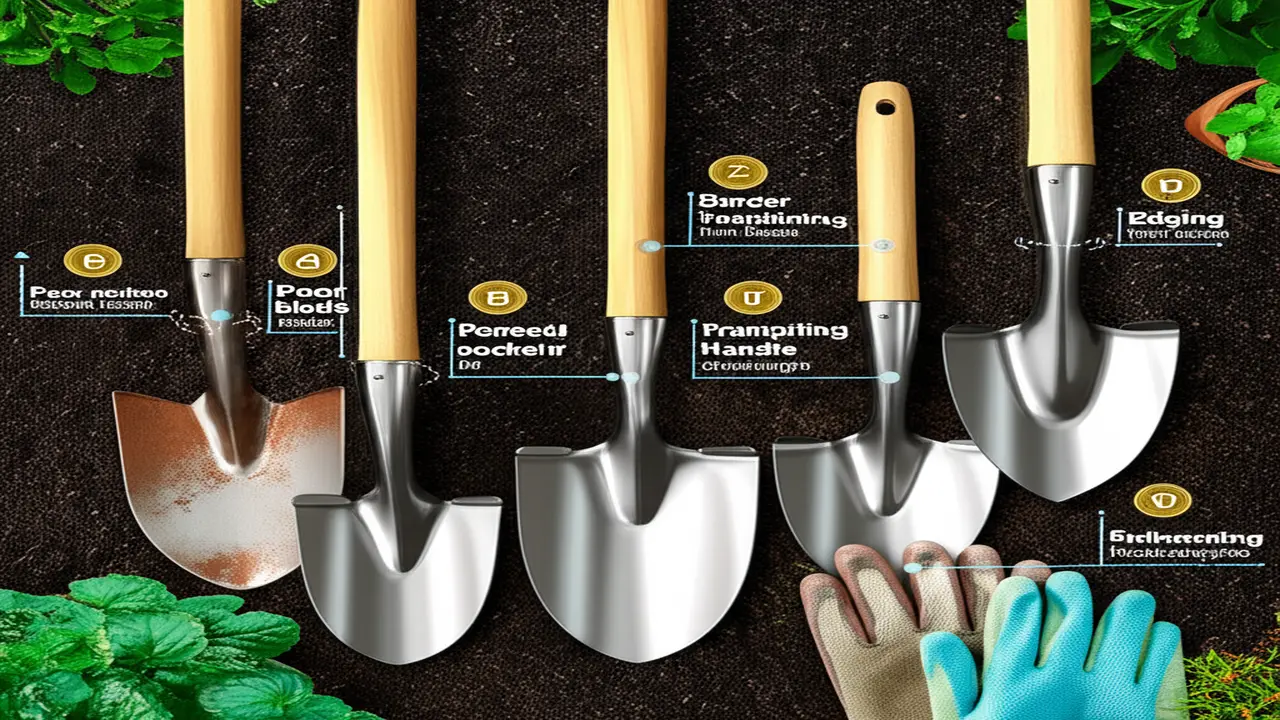Garden Fork Storage: The Ultimate 2025 Guide to Safe & Efficient Organization
The garden fork is one of the fundamental tools in any gardener’s arsenal. Despite its importance, it’s frequently neglected when it comes to storage, often left leaning against walls or tossed in a corner. This habit turns an essential instrument into a potential tripping hazard or a magnet for rust and damage over time. Proper garden fork storage has benefits that extend beyond mere tidiness: it prolongs the tool’s life, enhances safety, and boosts your productivity by ensuring you know where everything is when it’s needed.
When tools are left scattered or unorganized, it wastes precious time searching and can lead to accidental injuries from sharp tines or falling equipment. Furthermore, improper storage accelerates wear—metal corrodes, wooden handles crack, and a once sturdy fork becomes less effective and more frustrating to use.
This comprehensive 2025 guide covers a diverse range of garden fork storage solutions, offering practical, space-saving, and safety-focused advice. Whether you prefer ready-made racks, mobile caddies, or smart DIY projects, you’ll learn how to maintain your garden tools properly to maximize longevity. We also delve into safety considerations and how to select storage options that best fit your space and budget.
Why Proper Garden Fork Storage is Essential
Extend Tool Lifespan
Garden forks, typically made with metal tines and wooden or metal handles, are vulnerable to natural elements. Exposure to moisture leads to rust on metal, while dirt and grime can dull the tines and degrade wooden handles. Leaving tools outside or haphazardly piled increases the risk of impact damage and weather-related deterioration. Proper storage shields your tool from moisture, excessive heat, cold, and physical wear, preserving its sharpness and structural integrity.
Enhance Safety
Sharp and heavy implements like garden forks can cause injuries if left on the ground or in cluttered spaces. Storing them securely—preferably with tines covered or directed away from open spaces—reduces tripping hazards and accidental stabbing or scratching incidents. Stable storage setups prevent tools from falling unexpectedly while ensuring safer retrieval and placement.
Improve Organization & Efficiency
A well-organized garden tool storage system accelerates your workflow. When forks, spades, rakes, and other long-handled tools have designated spots, you spend less time searching, enabling a more efficient gardening routine. Efficient storage also optimizes space in sheds, garages, balconies, or even outdoors, allowing you to better utilize your available area.
Maintain Value
High-quality garden forks represent a solid investment. Proper tool organization and maintenance ensure that you retain their value and performance for years. Neglecting storage can lead to premature replacement costs and frustration.
Key Considerations Before Choosing Your Storage Solution
Before selecting a garden fork storage system, assess your needs carefully:
- Available Space: Are you working with a small shed, a compact garage, an apartment balcony, or a large outdoor workshop? Vertical space-saving vs. floor-based options differ significantly in suitability.
- Number & Type of Tools: Only a couple of forks or a whole collection of long-handled tools? Don’t overlook the weight and size of your tools when choosing storage.
- Budget: Do you prefer a low-cost DIY tool rack project, or are you considering ready-made products? Budget impacts material choice and complexity.
- Environment: Indoor (shed, garage, basement) versus outdoor storage influences your weather protection requirements. Humidity and temperature swings can dictate your storage choices.
- Accessibility & Convenience: How often do you use your garden fork? Quick access might favour open racks or wall-mounted systems.
Diverse Garden Fork Storage Solutions
Wall-Mounted Solutions (Maximizing Vertical Space)
Wall-mounted options capitalize on vertical space, freeing up floors for other uses. Specialized tool racks that hold multiple long-handled tools are efficient and secure, offering easy access.
These racks may require stable wall installation but provide an organized, professional look. Plastic and metal commercial racks are common high-quality garden tool solutions favored by many gardeners.
Simple heavy-duty hooks or brackets offer inexpensive, customizable spacing alternatives, though tools can swing slightly and may look less polished.
Pegboard and slatwall modular systems offer adaptiveness for various tool sizes and a highly customizable setup, ideal for gardeners who want flexibility in their storage layout.

Freestanding & Mobile Solutions (Flexibility & Portability)
For gardeners who need mobility or prefer a floor-standing solution, tool caddies or upright stands provide convenient options. PVC, wood, or metal organizers keep tools upright and off the ground but require sufficient floor space and stable footing.
Mobile tool carts with rolling features allow moving your tools easily throughout your garden or workshop, facilitating convenience but sometimes at a higher cost and maintenance for wheels.
DIY Garden Fork Storage Projects (Cost-Effective & Custom)
DIY projects empower you to tailor your storage to the precise dimensions and aesthetic of your space, often utilizing scrap materials.
A simple wooden wall rack can be built with basic tools and materials, providing dedicated slots for each garden fork. Below is a streamlined approach:
- Cut scrap wood to size; create slots or hooks for tool handles.
- Assemble the wood rack securely with screws.
- Mount firmly on a wall for easy access.
This straightforward project ensures high durability with minimal expense.
Repurposed pallets can be adapted into ecological storage racks by attaching them vertically onto a wall and using the slats to hang or lean tools, offering a rustic but highly functional appearance.
For an innovative approach, large-diameter PVC pipes can be cut into sections to store garden forks individually. This method is weather-resistant, inexpensive, and simple to clean, suitable for indoor or covered outdoor storage.
Alternatively, an old bucket or barrel can be used as a quick, portable storage basket. While not highly organized, it suffices as a temporary solution for tool grouping.

Purchasable Garden Tool Organizers & Racks (Convenience & Durability)
For gardeners preferring ready-made solutions, various commercial options excel in quality and durability.
Wall-mounted systems such as Rubbermaid FastTrack and Gladiator GearTrack provide heavy-duty, steel or plastic racks designed to hold multiple long-handled tools safely. When choosing, consider weight capacity, material strength, and ease of installation.
Rolling tool carts offer portability, ideal for those who want to move tools around the garden or garage. Quality wheels, stability, and weather resistance (for outdoor use) are key selection criteria.
Outdoor storage chests or waterproof storage boxes create enclosed protection from weather while providing ample storage volume. Resin or metal boxes with secure, watertight seals and ventilation prevent mildew buildup.
For extensive collections or comprehensive tool storage needs, pre-built storage sheds or lean-tos allow installation of internal racks and organizers, maximizing usable space with tailored solutions.
Essential Tool Care Before Storage
Clean Your Garden Fork
Before storing your garden fork, eliminate soil, plant matter, and debris from both tines and handles. Employ a stiff brush, hose, or a putty knife to ensure thorough cleaning.
Dry Thoroughly
Drying is vital to prevent rust on metal parts and rot on wooden handles. Air drying or wiping down with a dry cloth ensures moisture is removed.
Protect Metal & Wood
Apply a light coat of oil to the metal portions to inhibit rust formation. Linseed oil or mineral oil is excellent for wooden handles to prevent drying and cracking, while WD-40 is a practical option for metal parts.
Sharpen (Optional, Before Storage)
If your garden fork requires, a brief sharpening with a file or whetstone keeps tines effective and ready for next use.

Safety First: Storing Your Garden Fork Securely
Safety is paramount when storing garden forks. Position tines downward or toward walls to prevent accidental contact, and consider covering sharp points with old hose sections or tool caps.
Ensure any wall-mounted racks are firmly anchored to prevent detachment. Freestanding units should be stable, resisting tipping, especially in high-traffic areas.
If children or pets access your gardening space, store tools out of reach or secure them in locked cabinets or sheds to avoid accidental injuries.
Keep pathways clear to avoid becoming trip hazards for family members and visitors.
Choosing the Right Solution for Your Garden & Garage
The ideal garden fork storage solution varies based on your setting and preferences:
- Small Yard/No Shed: Prioritize compact wall-mounted racks or weather-resistant outdoor storage boxes that save space.
- Dedicated Shed/Garage: Use vertical storage strategies, DIY or tailored racks for full tool collections.
- Budget-Conscious: DIY projects with repurposed pallets or PVC pipes provide low-cost, effective options.
- Ease of Access: Simple hooks, open racks, or mobile tool caddies allow quick retrieval.
Ask yourself:
- Do I need protection from weather elements?
- How much space do I realistically have?
- What is my budget for tools and time?
- How many tools require storage?
- Are child and pet safety primary concerns?
Conclusion: An Organized Garden Awaits
Investing time and resources in proper garden fork storage safeguards your tools, improves safety, and streamlines your gardening efforts. This guide equips you with diverse solutions—wall-mounted racks, freestanding caddies, DIY projects, and commercial organizers—to fit any budget or space. Coupled with essential maintenance and safety tips, you ensure your garden forks remain ready for years of effective use.
Start organizing today to create a safer, more efficient, and enjoyable gardening experience. Remember to periodically revisit your storage system as your collection grows or your garden changes.
Additional Resources:
For more on garden tools, consider exploring:

